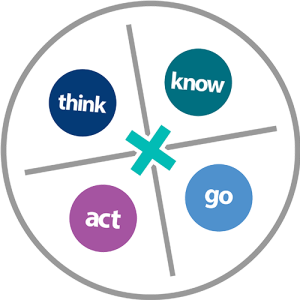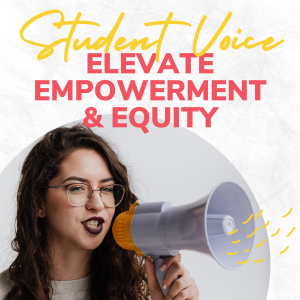The Takeaway Series With John Hockenberry, October 19-21-23, 2015
The Takeaway is a co-production of WNYC Radio and Public Radio International, in collaboration with The New York Times and WGBH Boston.
[dt_gap height=”25″ /]

What a pleasant surprise to find The Takeaway starting a series focusing on community colleges last week! For years I’ve been a rabid fan of these underdogs of U.S. higher education. It’s been frustrating, to say the least, to hear them referred to as a second-rate option with high dropout rates, an overdependence on adjunct instruction, and low degree completion.
This radio/web series provides an academic-year look at the revolution that is occurring within these institutions. A lack of quality job opportunities for ordinary Americans has been a driving force behind the rethinking and restructuring of community colleges. With a focus on innovation, the featured colleges have found ways to help students stay in school and complete their education. As they innovate, these community colleges become “engines of social mobility and economic growth.”
The series begins by picking the brain of Josh Wyner, the executive director of the Aspen Institute’s College Excellence Program, which tracks the rising stars among the nation’s community colleges and awards a $1MM prize every other year to showcase excellence. Wyner talks about Valencia College in Florida and Walla Walla Community College in Washington state, which both provide students with curriculum-aligned pathways to reach their goals. Valencia is especially noted for their collaboration with the University of Central Florida, offering a seamless transfer at the end of two years. Walla Walla’s alignment expertise is demonstrated in the curriculum pathway for students from the college to career, including water management, energy, and winemaking. Wyner says:
[dt_quote type=”pullquote” layout=”left” font_size=”big” animation=”none” size=”1″]“I do this work because I believe deeply in the opportunity of individuals through education for social mobility in a capitalist system….If we don’t make good on the promise for people to enter that world with the skills they need, our economic system makes no sense. Higher education is not the only way, but I would say [it’s] certainly one of the most important ways for us to create equal opportunity for people to take advantage of what is a very dynamic and open society.”[/dt_quote]
In the second installment, the focus is on the support required for community college students to be successful. Across the country, students struggle with college preparedness. The Education Commission of the States estimates that nearly 60% of community college students are in need of remediation. Taking developmental education courses is often a huge burden to students in terms of time and finances, especially nontraditional students with family and job responsibilities on top of any classes they’re enrolled in. This segment highlights the City University of New York’s creative ways to effectively suppor students in need of remediation.
Then, in my favorite segment of the series so far, Shanna Smith Jaggars, assistant director of the Community College Research Center at Columbia University’s Teachers College, noted what has always impressed me the most: “The passion that so many instructors and administrators have about the mission to help so many low-income students succeed and move forward to success in their lives.”
Jaggars, who has coauthored Redesigning America’s Community Colleges: A Clearer Path to Student Success, sees community colleges as gateways of opportunity with a lot of room for growth. She points out that community colleges must convince students that a completed degree or certificate will benefit them and their community. She recommends that schools intentionally craft specific programs to do more to help students explore and identify goals, and then support the students in meeting those goals.
Embracing Jaggars’ recommended process speaks to the benefits of structured student pathways that begin in high school, continue into and through community college courses and programs, and on to careers. One of the more powerful strategies for improving student engagement is providing clear, coherent pathways that demonstrate to students the relevance and importance of each and every course toward reaching their goals. The good news is that establishing guided pathways does not have to be expensive—much of the process can be funded by reallocation of resources, particularly for the inexpensive but highly effective process of freeing up faculty time for redesigning curriculum.
Jaggars echoes my feelings when she says that community colleges have a duty to teach liberal arts as well as provide job-specific training. She believes that students need to have the soft skills that employers look for, including teamwork, critical thinking, and self-responsibility. She suggests integrating these skills into career technical education (CTE) courses.
The question behind all of this seems to be: What do we want our students to be able to do at the end of their educational journey—whether it be transfer or career? Once we answer that, our task is to align and integrate those outcomes and competencies into the curriculum at each step of the pathway we provide for our students.
[dt_gap height=”10″ /]
For more information on guided pathways and alignment, contact Kirsten Aspengren at xvefgra.nfcratera@vasyrkvba.bet
[dt_gap height=”10″ /]
[dt_quote type=”blockquote” font_size=”big” animation=”none” background=”plain”]Links to the complete podcast:
The Community College Challenge
Community College: The New Frontier
Improving Community College with Intensive Support
Want to Increase Student Success? Redesign Community Colleges[/dt_quote]




